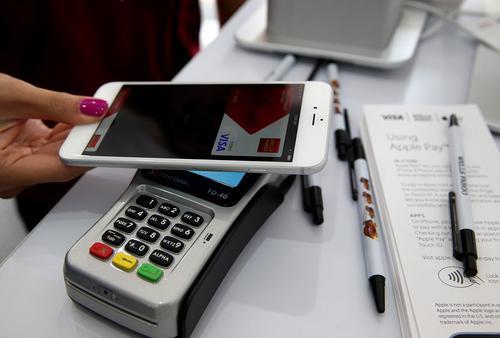Apple Pay Won’t Kill PayPal, Could Even Help It

Millennial consumers love to go mobile, using their phones to pay for everything, often rejecting the big brands preferred by older generations. When it’s time to split the check, they’d never use PayPal. It’s Venmo all the way.
What many don’t realize is that PayPal owns Venmo, which came as part of its $800 million acquisition of Braintree last year.
What many don’t realize is that PayPal owns Venmo, which came as part of its $800 million acquisition of Braintree last year.
In fact, confusion around just what PayPal does and doesn’t do seems to have confused investors weighing the upcoming spin-off from eBay, expected early next year. Prospects for the fast-growing payments platform appear much brighter than the conventional wisdom has it, even with Apple’s recent entry into the market. And once PayPal is free of eBay and gains its own stock to make acquisitions, the upside is even greater.
Already, PayPal is the leading digital payment option in the United States and in many other parts of the world. Almost $260 billion of transactions flowed through the various bits and pieces of PayPal over the past 12 months. That’s up 27 percent from the prior 12 months and, thanks to the Braintree acquisition, the growth rate has been increasing in recent quarters.
The company offers several different kinds of services. PayPal is best known as an online consumer service that lets people send payments directly to other users, including both individuals and businesses. But through Braintree, PayPal also owns the Venmo app, as well as a platform that lets websites, app developers, and other merchants accept all kinds of payments, including credit cards, PayPal and even Apple Pay.
Some think PayPal is too dependent on eBay. After all, the service got its start by offering a safe and secure way for eBay auction buyers to pay sellers. But only one-quarter of PayPal’s transactions come from eBay, and the proportion has been dropping rapidly over the past two years.
Rather, being too close to eBay may have inhibited PayPal’s ability to strike deals with other e-commerce companies or make stock-based acquisitions. Up-and-comers like Stripe and Square might be much more interested in getting acquired with shares of a hot growth stock than eBay shares, which have been stuck in a narrow trading range for the past two years. And being independent should focus PayPal’s goals and incentives on becoming the “Visa of the Internet,” as hedge fund manager Daniel Loeb puts it, without worrying about the fallout at eBay.
Then there is the Apple Pay question. Consumers who choose Apple Pay may not be choosing PayPal. But, as Loeb points out, PayPal does under 2 percent of its total volume today in the real world of physical stores, Apple Pay’s main market thus far. That gives PayPal a chance to enter that segment as a disruptor, Loeb says.
And there is also some misunderstanding about just what Apple Pay does. In essence, the service is just a convenient front-end for consumers. Beneath the surface, the app is using existing credit card networks from American Express, Visa, and MasterCard, along with payment processors including Braintree and its competitors.
In other words, an app developer or retailer that wants to allow customers to pay by Apple Pay still has to choose how to implement its underlying payments infrastructure and can still choose PayPal’s Braintree. So the spread of Apple Pay and greater use of mobile payments could help PayPal grow more quickly. And while Apple collects only 15 cents on a $100 Apple Pay transaction, PayPal and Braintree get $3.50 on average.
Headlines that Apple Pay is going to kill PayPal only bring to mind similar stories over the years. Remember when Square was going to kill PayPal? Or Google Wallet was going to kill PayPal? Or Venmo?
Seems like PayPal may just outpace them all.
Seems like PayPal may just outpace them all.
Comments
Post a Comment